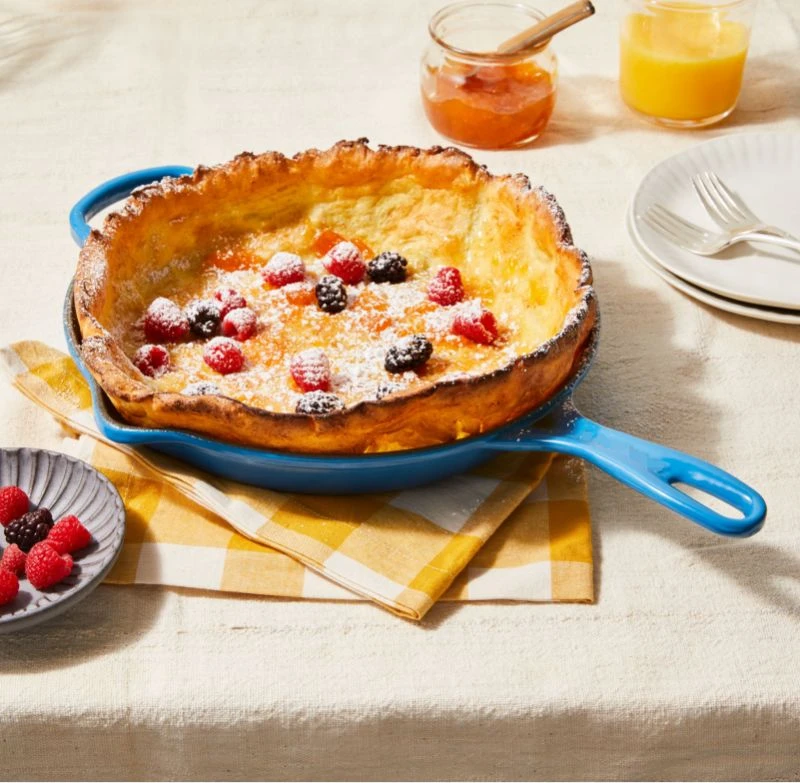
Tips for Preventing and Removing Rust from Your Dutch Oven
Restoring Rusty Dutch Ovens A Comprehensive Guide
Dutch ovens have long been treasured in kitchens worldwide for their versatility and durability. These heavy cast-iron pots are perfect for braising, baking, stewing, and even frying. However, even the best Dutch ovens can develop rust over time, especially if they are not cleaned or stored properly. Rust can be a daunting problem, but with the right approach, restoring a rusty Dutch oven can be a straightforward and satisfying task.
Understanding Rust Formation
Rust is the result of iron reacting with moisture and oxygen in the presence of acids. In a kitchen setting, rust often forms when a Dutch oven is left wet, improperly dried, or exposed to air and moisture for extended periods. The rust appears as reddish-brown spots and can affect the cookware's functionality and flavor of your food. Thankfully, rust formation is typically superficial, which means it can often be removed with minimal effort.
Initial Assessment
Before starting the restoration process, assess the extent of the rust damage. If the rust is limited to just a small area, you may be able to simply scrub it off. However, if your Dutch oven is extensively corroded, you may need to take more drastic measures. To begin, gather your supplies fine steel wool or a nylon brush, mild dish soap, warm water, a sponge, and vegetable oil, or a commercial seasoning product.
Cleaning Process
1. Scrubbing Off the Rust Use your steel wool or nylon brush to scrub away the rust. For light rust, a gentle hand should suffice. For more stubborn areas, you may need to apply more pressure. Be sure to scrub in a circular motion to prevent scratching the cast iron excessively.
2. Washing the Dutch Oven Once the rust has been removed, wash the Dutch oven with warm water and dish soap using a sponge. This will help remove any leftover rust flakes and oils. Rinse thoroughly to ensure that no soap residue remains, as this may interfere with the seasoning process.
3. Drying Properly drying your Dutch oven is crucial in preventing rust from forming again. Use a dry cloth or paper towels to wipe down the pot, and then place it on low heat for a few minutes to evaporate any remaining moisture.
dutch oven rust

Seasoning Your Dutch Oven
Once the Dutch oven is clean and dry, it’s time to re-season it to restore its non-stick properties and protect against future rust. Seasoning involves applying a thin layer of oil and baking it to create a protective layer.
1. Applying Oil Use a vegetable oil or a dedicated cast iron seasoning oil. Apply a thin, even layer to the inside and outside of the Dutch oven, making sure to cover all surfaces. Wipe away any excess oil with a cloth.
2. Baking Preheat your oven to 350°F (175°C). Place your Dutch oven upside down on the middle rack, with a baking sheet on the lower rack to catch any drips. Bake for about an hour. This process helps to polymerize the oil, forming a durable seasoning layer.
3. Cooling Down After an hour, turn off the oven and allow the Dutch oven to cool inside. This gradual cooling process will help set the seasoning.
Regular Maintenance Tips
To prevent rust from forming on your Dutch oven in the future, consider these maintenance tips
- Clean and Dry Immediately After each use, clean the pot and dry it promptly to avoid moisture build-up. - Avoid Soaking Never soak your Dutch oven in water, as this will lead to rust development. - Re-season Regularly Depending on usage, re-season your Dutch oven every few months to maintain its protective layer.
Conclusion
Restoring a rusty Dutch oven is both an art and a science. With a bit of elbow grease and some perseverance, you can return your cherished kitchen companion to its former glory. By following the cleaning and seasoning process outlined above and adhering to maintenance tips, you can ensure your Dutch oven remains a reliable tool for cooking for years to come. Remember, a well-cared-for Dutch oven will not only enhance your culinary creations but also age gracefully, becoming a cherished heirloom in your family.
-
Season Cast Iron Perfectly with GPT-4 Turbo TipsNewsAug.01,2025
-
High Quality Cast Iron Cookware - Baixiang County Zhongda MachineryNewsAug.01,2025
-
Premium Cast Iron Pan: Durable & Perfect HeatNewsAug.01,2025
-
High Quality Kitchen Durable Black Round Cast Iron Cookware Pancake Crepe Pan-Baixiang County Zhongda Machinery Manufacturing Co., Ltd.NewsAug.01,2025
-
Cast Iron Cookware - Baixiang County Zhongda Machinery | Nonstick, Heat ResistanceNewsAug.01,2025
-
High Quality Kitchen Durable Black Round Cast Iron Cookware - Baixiang County Zhongda Machinery | Non-Stick, Heat Retention, DurableNewsJul.31,2025


